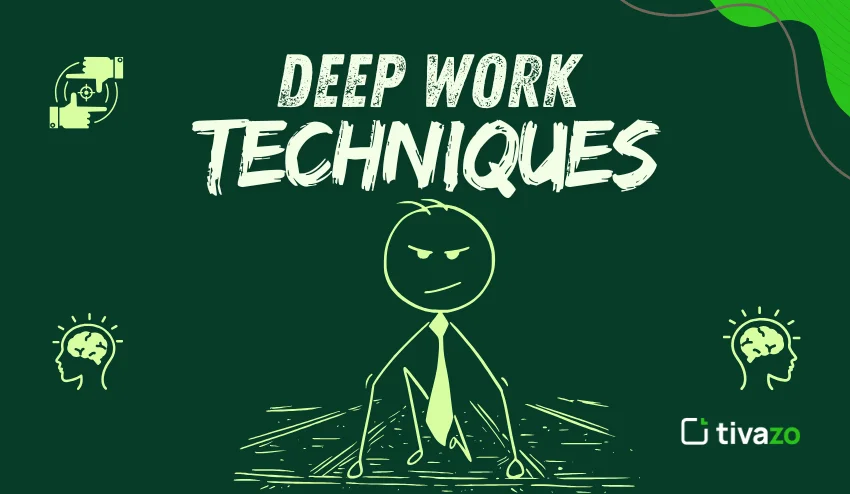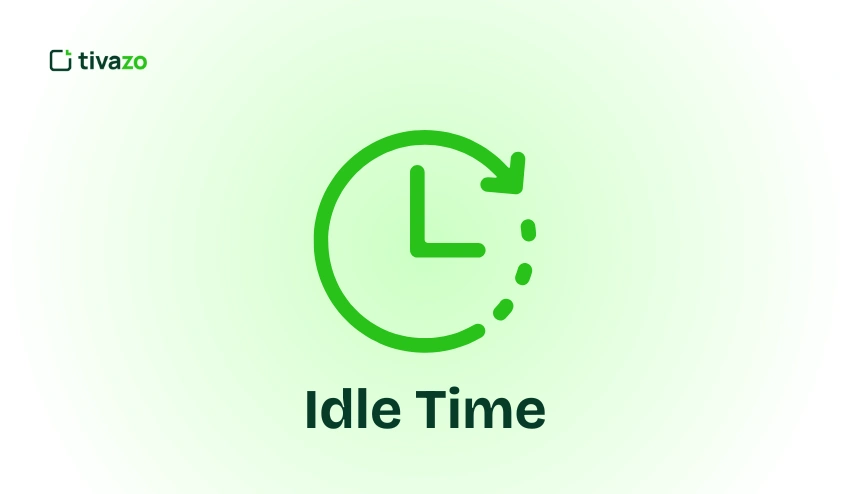In an age of distractions and shifting attention, the ability to practice deep work techniques becomes a game-changing skillset for sustained focus to create meaningful progress in your work. By using deep work skills, you are not just busy; you are doing meaningful work. This blog will cover what it means to work deeply versus shallow work, review the popular 333 rule to be productive, discuss the four rules for deep work, provide examples, and present 10 proven deep work skills, including how to track your deep work time for the most meaningful effect. If you are struggling to get great results from your work time, you’ll want to keep reading.
What is the Technique of Deep Work?
Cal Newport developed the concept of deep work techniques, which he describes as “professional activities performed in a state of distraction-free concentration that push your cognitive capabilities to their limit. These efforts create new value, improve your skill, and are hard to replicate.”
In other words, deep work techniques are the practice of intentionally scheduling time away from distraction and applying your deep attention to a particular cognitively demanding task. Deep work is to enter a state of flow while your mind is completely engaged, resulting in high-quality work in an efficient amount of time.
Deep work is contrasted with shallow work (which we’ll discuss later). The basic principle behind deep work theory is that you schedule a session for focused, high-impact work, you create rituals to support that session, and you measure the output. When the concept of deep work techniques is mastered, the professional can increase their productivity, creativity, and the potential for advancement in their career.
What Is the 333 Rule for Productivity?
One of deep work’s most effective allies is the 333 Rule (or sometimes referred to as the 3-3-3 Method). Productivity experts like Oliver Burkeman explain that this approach emphasizes breaking your workday into segments of three distinct criteria:
- Devote 3 hours to your top priority project, your deep work technique hours.
- Complete 3 small to-do tasks you keep delaying or small tasks that require very little effort.
- Do 3 maintenance tasks like organizing files, dealing with your inbox, and exercising to reset the mind.
The upside is that it is a simple, balanced approach. Having the 333 rule in relation to deep work ensures you are using your best cognitive energy to do the work that matters most and helps you combat burnout, increases priorities effectively, and gives you a sense of satisfaction by the end of the day. Before too long, a combination of the 3-3-3 rule and deep work will create a sustainable rhythm to help with focus, productivity, and consistency towards your deep work mastery.
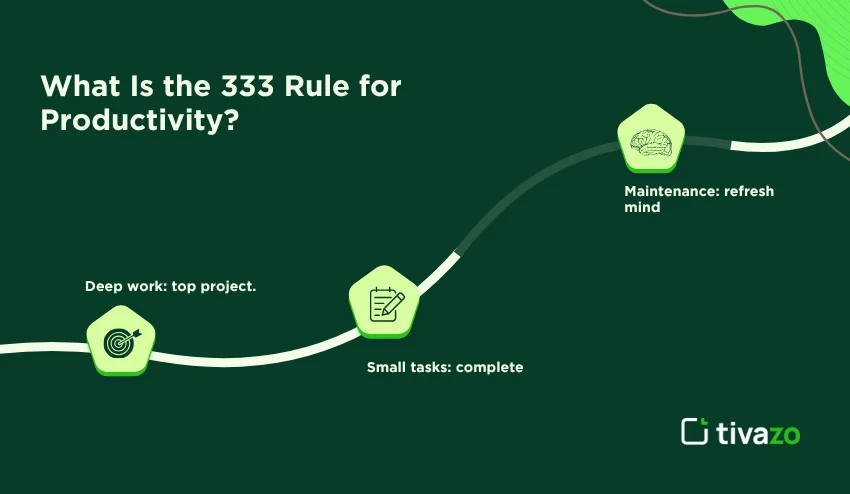
What Are the Four Rules of Deep Work?
Structuring and which techniques you will use are essential to utilizing deep work methods properly. Cal Newport outlines four essential philosophies for scheduling deep work:
- Monastic(remove all that distracts you and spend full days or amounts of time to deep work, this way you give maximum focus and output for your most important work.
- Bimodal(first set aside an extended period (e.g., A day or week for deep work), followed by the other work that isn’t deep work, or shallow work.
- Rhythmic(you consistently schedule deep work sessions at the same time of the day regularly, making it a habit in your life.
- Journalistic(find a place to put any amount of time that is free into deep work. This can be less important but hard to maintain.
Each philosophy is a different way to practice deep work, and the right philosophy for you ultimately depends upon work style and responsibilities. Plenty of professionals use both philosophies. For example, someone may find some consistent uses of rhythmic schedule, while still using journalistic language for smaller or spontaneous elements of deep work.
The consistent use of implementing the weekend, though, is really key! Then, over time, you become trained to be more present and provide deeper high quality work and meaningful work. Each of these phenomena, over time, becomes natural and is incorporated into your overall workflow.
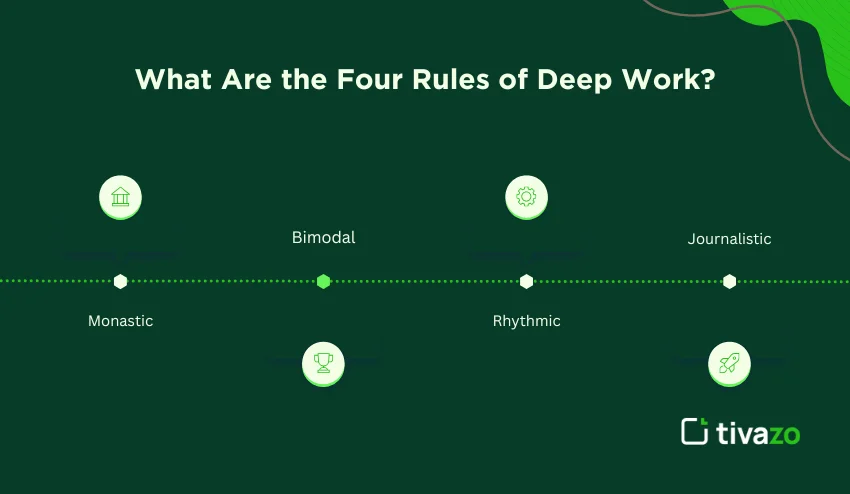
Examples of Deep Work
To demonstrate the deep work approach in practice, let’s provide examples:
- A software engineer employs the deep work approach to code complicated algorithm modules for 2-3 hours, with no email or chat interruptions.
- A content marketer uses the deep work techniques approach to outline and write a long-form article that requires reflecting without checking social media or Slack.
- A researcher utilizes the deep work approach to analyze data, write up findings, and refine the methodology in silence.
- A product designer uses the deep work approach to create working or detailed prototypes, immersing intuitive thought solely into experience and design decision-making, without unnecessary switching.
- An entrepreneur uses the deep work technique to strategize the next quarter of business action strategy, diving into market analysis and financial forecasting with as little interruption as possible, while still working on a computer.
- A musician practices the deep work technique by setting aside uninterrupted hours to master various challenging compositions or to compose a new piece of music.
- A lawyer or legal researcher utilizes the deep work approach to draft complex contracts or respond to detailed case analysis in a quiet space, free from distractions.
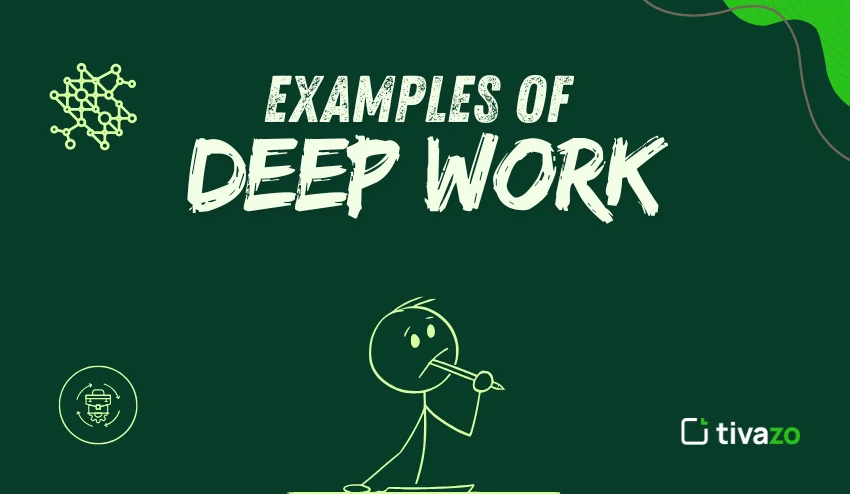
In all of these examples, the deep work method is present in the purposeful creation of distractions, sustained focus on the highest value task, and measurable output. Applying deep work techniques repetitively allows professionals in various fields to do more in less time, get better at tasks faster, and generate work that will distinguish them for quality and impact. At the heart of all deep work techniques is the same principle: create blocks of focused time, avoid distractions, and fully concentrate on cognitively demanding tasks. Practicing deep work techniques will eventually transform how professionals approach.
Ten Deep Work Techniques
Here are ten practical techniques that you can apply to make deep work techniques part of your routine:
- Have a fixed-time deep work slot – Each day, plan for deep work, from a 60-90 minute block (or more) for the deep work techniques.
- Define a specific goal for each deep work session – Before you begin your deep work time, develop a plan for exactly what you will accomplish during the deep work time.
- Remove distractions – Phone off and notifications turned off, apps blocked, etc. Deep work technique requires this environment.
- Use the 333 rule to book your day – Try to use the deep work technique in the first “3 hours” block, and then manage other tasks.
- Time-tracking your deep-work hours– Keeping track of how many hours you spend in deep work sessions vs shallow work.
- Begin deep work with a ritual – Examples: cleaning your desk, opening a new document, or putting on noise-cancelling headphones. This ritual prepares you for the deep work method.
- Consciously limit the length of your session – The deep work method works well in long and focused blocks of time, relative to time to transition between actions. Generally, most of us do not work well in very long blocks of time without breaks (90 minutes works).
- Reflect and assess – After a session of deep work is complete, consider what you have done. The deep work process is enhanced by a period of reflection.
- Manage shallow work differently – Use short time blocks to manage shallow work activity or to help “wind down” so that you don’t waste precious time in a period of deep work.
- Gradually increase your capacity for deep work – Begin with time blocks of shallow work, and increase gradually. Deep work is a skill, not a switch.
If you implement the deep work method consistently, you will be able to accomplish more in less time and of a higher quality.
Monitoring Your Deep Work Technique Practices
If you’re serious about improvement, you must monitor your deep work technique sessions. Here’s how:
- Choose a tool: Use a time-tracking app, or even a simple spreadsheet, to run down every deep work technique session: follow your start time, end time, what you were working on, and how many hours of deep work technique you accomplished.
- Metric to measure: Hours spent on deep work times compared to hours of shallow work.
- Regularly review: Check how many deep work techniques you achieved, if they helped output, and if you were distracted.
- Optimize: If you’re often interrupted, very likely you need to modify your ritual or environment. The deep work technique isn’t just about assigning time; it’s about being intently focused in that time.
- Scoreboard: Some individuals make a rolling visual of how many deep work-time hours they logged in a week. That way, the progress of deep work technique time adds up is tangible.
By tracking your deep work technique utilization, eventually, you will see patterns for when you are most effective, what type of work tasks effectively leverage the deep work techniques, and what types of distractions generally sabotage you.
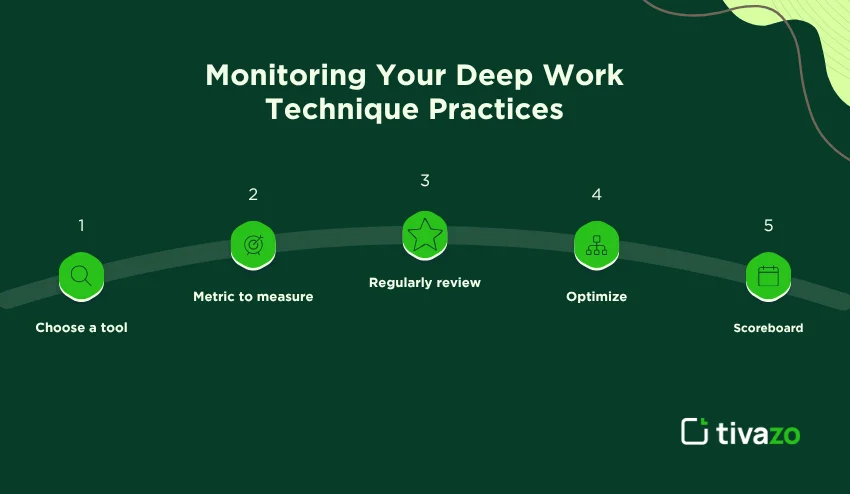
What is the benefit of using the deep work technique?
- The deep work technique has very significant benefits.
- It will help you to learn things more effectively and produce better work product.
- It gives you a competitive advantage: if most people are doing shallow work, the deep work techniques make you stand out.
- It actually creates a sense of job satisfaction: deep work techniques feel meaningful. The deep work technique helps you achieve that.
Conclusion
If you want to work smart instead of just working hard, the deep work techniques offer a proven approach. Move away from always being busy doing shallow work. Schedule deep work time where you focus on one thing at a time. The 333 rule can be used to plan your day. Then decide on a philosophy that works for you: monastic, bimodal, rhythmic, or journaling. Then draw upon the 10 deep work techniques listed above. Track your progress. Over time, you won’t be “using” the deep work technique; rather, it will become a behavior. It will change how you work, learn, and produce.
